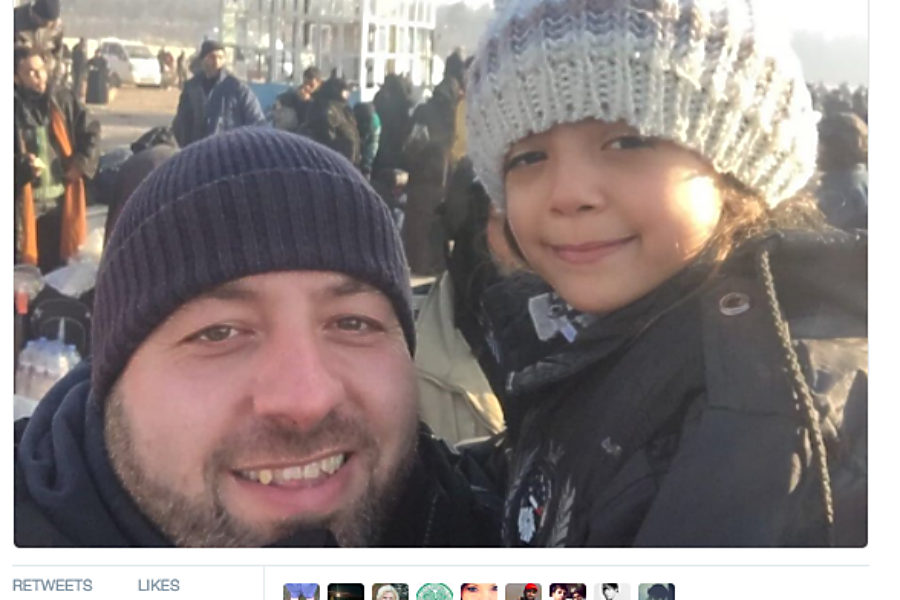Bana al-Abed, the 7-year-old Syrian Twitter star, escapes from Aleppo
Loading...
The 7-year-old Syrian girl who gained the support of thousands on Twitter by posting from her war-torn city of Aleppo has safely left the city along with her family.
Bana al-Abed, who has been called a modern-era Anne Frank, began posting videos, photos, and messages to a Twitter account in September with the help of her mother, Fatemah, who teaches English. Unlike Anne Frank’s own diary, which was not published or widely read until World War II came to a close, Bana’s tweets have shown the city in real time, giving anyone with internet access the ability to glimpse the horrors of life there.
Ahmad Tarakji, president of the Syrian American Medical Society, posted a photo to Twitter taken from the Aleppo countryside with the girl Monday morning.
While Bana’s pleas for help on Twitter captured the hearts of many, others criticized the account as propaganda, arguing that a girl that young likely wouldn’t speak or write English, and that it was unlikely anyone in eastern Aleppo would have such regular internet access.
But Bana and her mother have proven the account’s authenticity, speaking Monday while safe.
“We create our Twitter to tell all the world what happened there,” Fatemah said in an interview with Qasioun News Agency. “We are happy because our voice reached all the world.”
Bana’s family, along with many others, escaped the city Sunday after spending a full 24 hours on a bus without food or water.
“We stayed like a prisoner. A hostage,” Fatemah said. “But finally we arrived here and we thank God and we thank all our friends who had supported us.”
With Fatemah’s help, Bana took videos of bombs falling outside of her family’s apartment, photographed the ruins of the neighborhood, and told the world about the lack of hospitals to treat her and other children who fall ill.
Those horrific images were seen immediately by her 325,000 followers, and the young girl understood that her messages and photos were reaching a large audience. At times, she tagged officials, including President Obama, in the tweets, directly begging for help for her family.
Social media allows many voices, even a 7-year-old’s, to tell stories from the modern day conflict, and may play a role in drawing more global citizens to engage in the crisis. While Anne Frank wrote her diary never knowing if others would read her words, Bana used her Twitter account to plead for help and connect with followers around the globe.
"Because of the internet and social media, we see in real time what is happening inside Aleppo," Cameron Hudson, director of the Simon-Skjodt Center for the Prevention of Genocide, recently told The Washington Post.






